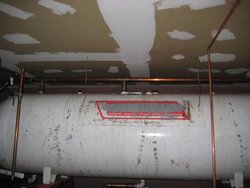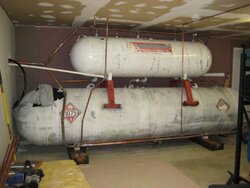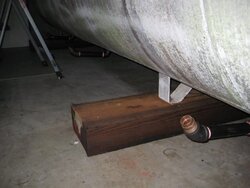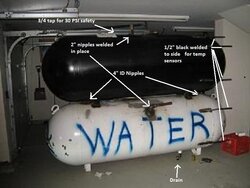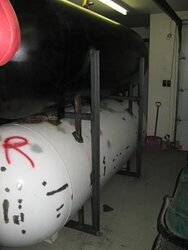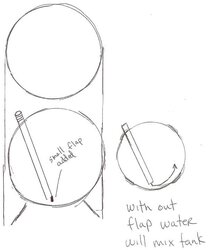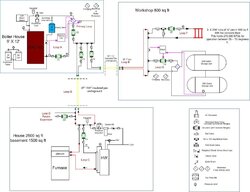Sure, you could have two loops into the buffer. What I find is any time my boiler exceeds 150 the buffer circ is running. As such the tank is always blended, not much stratification with the buffer tank circ running.
On one hand I want the cooler water from the bottom of the tank to return to the primary loop and boiler to leverage delta t to the boiler and keep the efficiency up.
However if the tank stratifies, for instance over night without the buffer circ running, in that case you would want to pull any heat loads off the top, warmest point. My buffer circ runs until that tank drops to 100F as my radiant floors can use temperature that low.
If you have loads thay require higher temperatures, of course shut down the buffer at the lowest possible "useable" temperature.
Whenever the buffer circ is off the boiler output would be going directly to the loads without "seeing" the buffer.
Keep in mind under "ideal" conditions, at load, the boiler would be matched exactly to the load and the buffer becomes "unknown" to the system. The buffer is merely a parking space, either for excess btus, over heat protection, maybe solar storage input.
You might consider the buffer as a "fixer" for the in-ability of solid fueled appliances to track close or exactly to the load. Different jobs require different size tanks to try to "nail" the perfect blend of not storing anymore then really needed, but enough to buffer all conditions, or perhaps offer some "non burn" times
I can't say there is an ideal piping, size, or control configuration. It really needs to be sized and designed to the task you have in mind. I chose 500 gallons because it will buy me a days worth of heat, at design. It fit in the space nicely, and I don't mind switching to a mod con LP boiler back up.
Others here want to burn hard and long and store more "time." For them more capacity may be better.
Keep in mind more capacity = more standby loss. I feel there is an upper limit to realistic thermal storage, but it's a moving target

Th primary loop circ is usually a low head, high GPM circ. It's ONLY lob it to move fluid around that circulator loop. It doesn't move any flow through secondary loops. Either the Grundfos 15-58 or Taco oo7 on speed 1 will usually be fine for that. To move 150,000 BTU at a 20Fdegree delta T you need to move 15 gpm. look for a circ to do that job at a low head, some of the DHW recirc pumps are great, but expensive as they are usually bronze or stainless volutes.
hr


